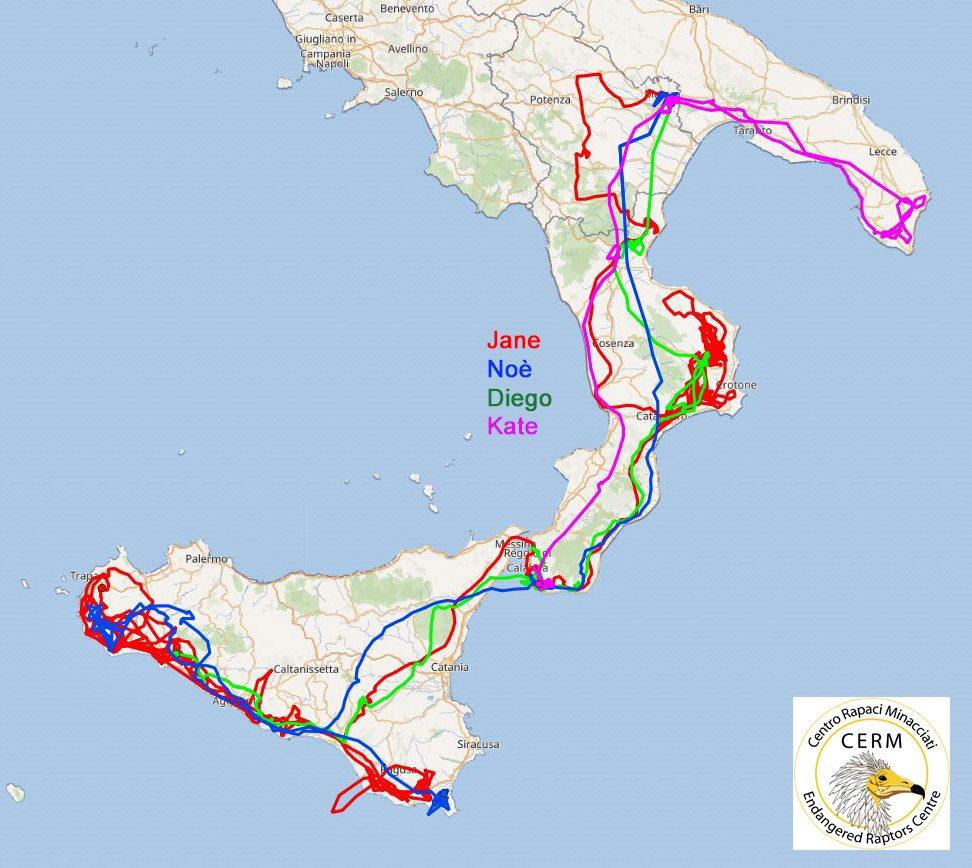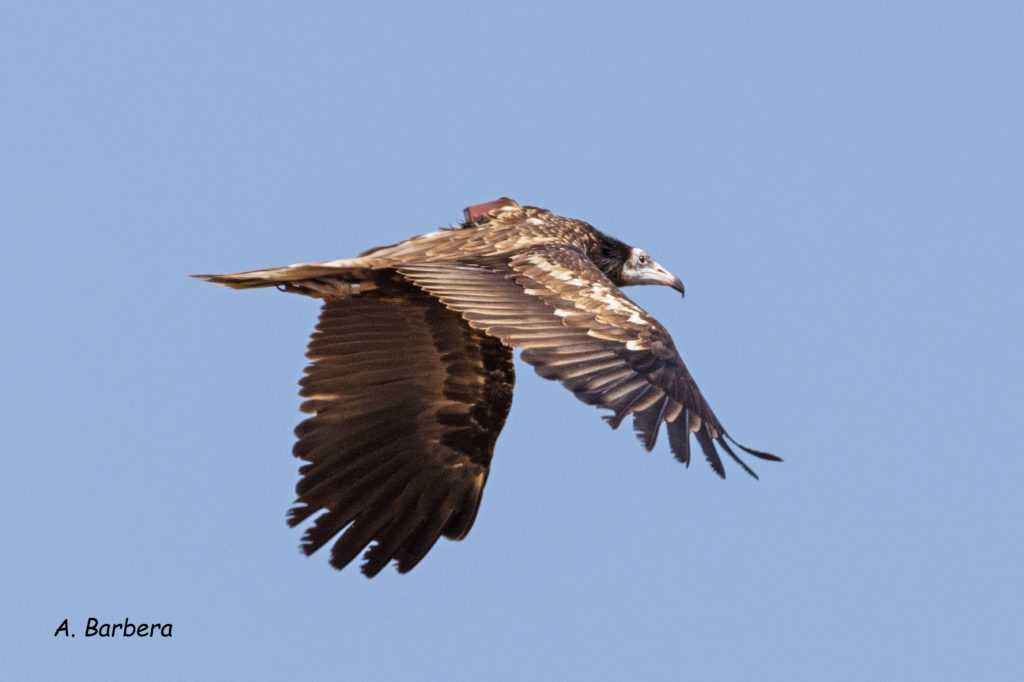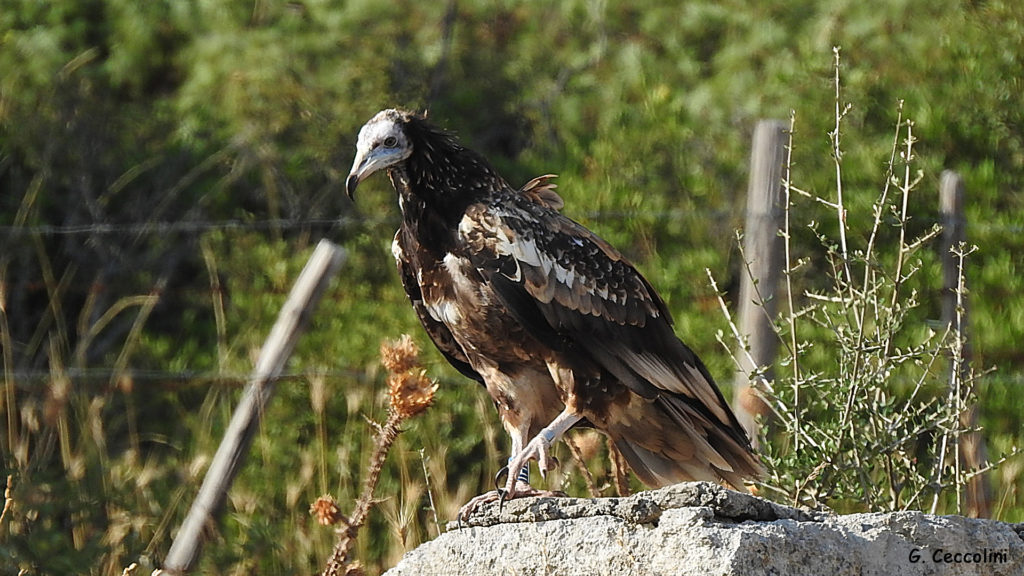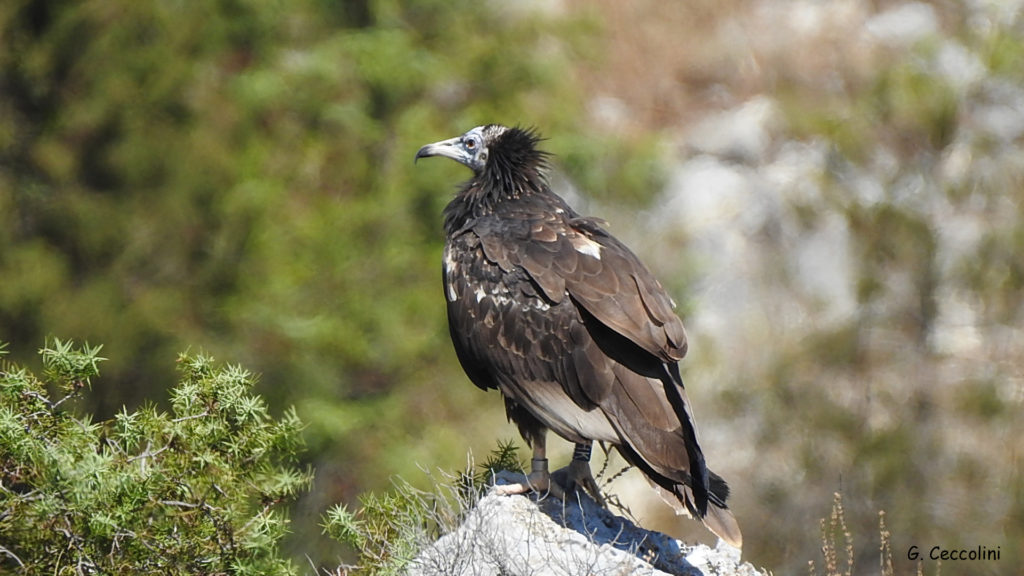Five of the eight vultures born in captivity and released in Basilicata during the last summer, left the release area and started their migration routes: Leonardo reached Africa in early September, Jane, Diego and Noah are still in Sicily while Kate is located in Calabria. Along the way the vultures are monitored and supported by dozens of volunteers and are supervised by the Forest Police.

Jane was the first to leave the Park of the Murgia in Matera when on August 6, only 7 days after the liberation, she moved to the south and took up residence in a Crotone’s area for 25 days. Starting from September 6th she moved to Sicily. It is interesting to tell that in the same area of Calabria in which Jane stopped, Tobia was at the same time staying, am egyptian vulture who had been freed on that site in 2015. After spending four years in Mali, Tobia returned to Italy remaining there from May to early September before going back to Africa.

The young Noah started his migratory journey on August 30 and in just four days he reached Sicily.

Leonardo started the migration on August 31st and between September 3rd and 4th he made the long crossing that separates the south-eastern coast of Sicily from Libya, with an overnight stop in Malta. The continuous check of his position and the network of contacts of the CERM Association allowed to alert in real time several colleagues on the Island of Malta: in this way the young Egyptian vulture was guarded by numerous volunteers, ornithologists and hunters, until when, on the morning of September 4th, he left and flew over 400 km of open sea. He reached the African coast after a no stop 10 hours flight. His last signs indicated that he was entering the Libyan desert, heading south, where he had already traveled over 420 km.
Diego left Basilicata on September 24th and arrived in Sicily on September 29th.

Kate made a first major move on September 24th but in the wrong direction, moving to the southern end of Puglia for four days; once back in Basilicata, on 30 September it headed south and reached Calabria.

Lucrezia, a three years vulture, has not yet moved from the release area, where she has undoubtedly found herself well, because, if necessary, she can find water and food that several volunteers never miss to give her.
For Francesca, on the other hand, there was any long journey but only the return to CERM, where it was born in 2017: after the liberation the animal had moved to south-eastern Puglia, in an environment unsuitable for the species, in which she was fed by some volunteers; since she was very confident, she was recaptured about a month after her release and then returned to CERM.
Unfortunately we have no news of Beatrice because of the malfunction of her GPS / GSM datalogger; the latest signs and sightings in the release area date back to August 19th.
CERM and ISPRA Association’s experts keep following the movements of the Egyptian vultures. They inform the network of volunteers who follow the vultures on the field. The volunteers check the vulture’s health status, monitor them in the most risky areas in order to avoid poaching, especially in Sicily, they take pictures of them and provides them with additional food.
Some officers of the Carabinieri Forestry are carrying out monitoring and surveillance activities and this activity is particularly intense in Sicily by the CITES Carabinieri Group of the Forestry, Environmental and Agribusiness Units of the Carabinieri Corps (CUFA).
In areas where some of the Egyptian vultures stopped for a long time, volunteers and Carabinieri foresters gained the attention of the local people and, sometimes, they got the collaboration to “control” the animals and even to supply some food.

